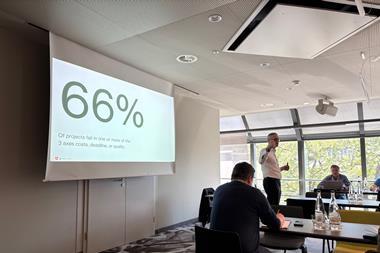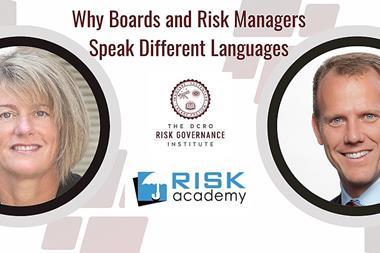Why taking a social scientific approach to risk management can help you see into the future more effectively
Risk, in my mind, is heavily influenced by behavioural and psychological factors, says David Hancock.
Risk management involves the interaction of people and their ability to solve future problems. But our concept of risk is simply a perception of what might happen in the future.
Compounding this is the fact that the future has yet to happen. Therefore there are a wide range of possible future states, greatly outnumbering the single actual state that will occur.
This all contributes to risk being an illusory concept that exists in the consciousness of individuals. The link between this concept and reality comes through the experience of actual harm, in the sense that human lives are lost, the environment is damaged, buildings collapse or value is eroded.
Which all begs the question: why is the world of risk dominated by quantitative measurements and scientific fact rather than qualitative philosophy and social science?
Theory
There are some inherent similarities between the concepts of risk and psychology. Psychology is defined as “the scientific study of the mind and behaviour of humans and animals”. Because of the practical problems
of studying the mind directly, psychologists tend to concentrate on what is observable and measurable, including biological processes in the body. Risk is also a difficult concept to define and so we tend to study what is observable and measurable in terms of probability and consequence.
It is well known among psychologists studying individual behaviours that those behaviours may become altered simply by the act of being studied. This was first demonstrated in a research project at the Hawthorne Plant of the Western Electric Company in Illinois, US, in 1927.
This research began by examining the psychological impact of physical and environmental changes in the workplace: brightness of light, humidity, breaks, working hours, leadership. The main finding of the study was that almost regardless of the intervention, the productivity of workers seemed to improve. One conclusion is that the workers were simply pleased to receive attention from the researchers.
Similarly, in the case of risk management, the task of carrying out a risk workshop, concentrating on identified risks and developing mitigating actions means stakeholders become more aware of those known risks. This increased awareness also tends to assist in spotting the development of risks that have not been explicitly identified.
The act of carrying out workshops has the potential to improve the risk profile of a project. This phenomenon explains why those risks against which financial contingency is placed during the early stages of a project tend not to be the areas where it is spent.
Practice
Here are some key points to remember if you are interested in applying a social scientific approach to risk management:
1 The perception of risk varies from one individual to the next, even under the same conditions
Risk is illusory and the link between the mental concept and the real world only shows itself through actual harm. Therefore the range of risk possibilities is limitless and tends to be framed by an individual’s experience.
2 The role that dialogue plays is often underestimated
The personal dimension of risk means that allowing individuals, teams and stakeholders to explore and examine the problems analytically – under the guidance of a trained facilitator – can be very useful.
3 Keep an open mind
The ‘many possible futures’ aspect of risk means that we need to keep an open mind and avoid the pursuit of fixed or predetermined solutions.
4 Psychology is relevant to risk management
There is a wealth of knowledge available in tools and methodologies developed by social and behavioural scientists to uncover solutions to problems they have encountered. These can be of great assistance to risk managers, particularly when considering the qualitative and softer aspects of risk. At the same time, we must not ignore the use of evidence-based models and statistics but use them to inform and direct our decision making.
5 Don’t be too pushy
To be successful, facilitators of risk workshops need to take a neutral perspective and consciously avoid transferring their views and opinions to participants in seeking solutions. If they do, the resulting solution will be more tailored to the views of the person facilitating the session than of the team taking part. SR
David Hancock, head of risk management, London Underground



















